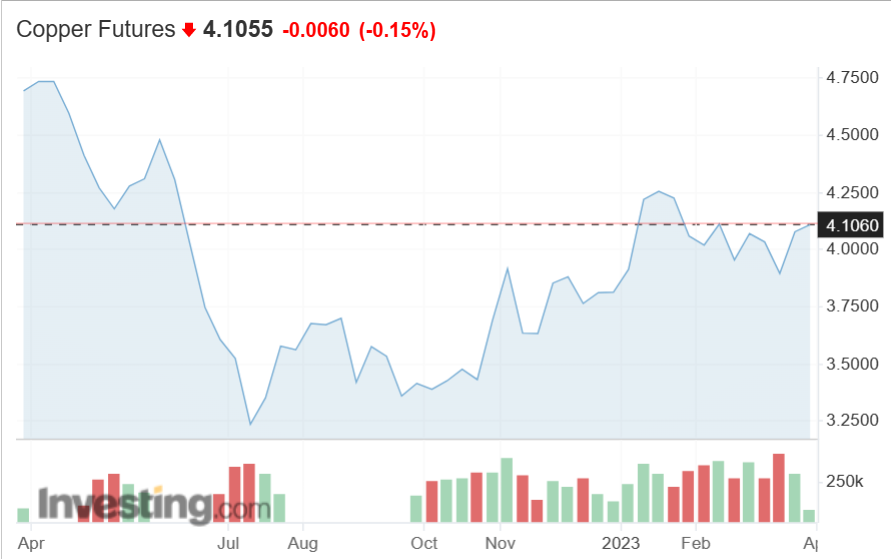
Summary of key points: -
- Narrowing Kiwi dollar trading range will not last too long
- US inflation prints lower than forecast (yet again!)
Narrowing Kiwi dollar trading range will not last too long
The NZD/USD exchange rate has continued to trade in a quiet, saw-tooth, sideways pattern over this last week between 0.6210 and 0.6270.
Over the month of March, occasional bouts of US dollar appreciation on global forex markets have sent the NZD/USD rate lower, however the NZD selling volumes have not been sufficiently sustainable to hold the Kiwi dollar down. In fact, the support levels where NZD buyers are entering the market have progressively moved higher over the course of the month. On March 8th the NZD/USD exchange rate was sold down to a low of 0.6100, only to subsequently bounce back up to the 0.6240 to 0.6260 area. The Kiwi attracted consistent buying interest at the 0.6170 point on three separate occasions on 16, 22 and 27 March respectively. The last Kiwi pullback on 30th March encountered buying support at the higher 0.6210 level.
The overall interpretation of the NZD/USD currency direction over the last six months is that the spectacular 10 cents rush back upwards from the over-sold 0.5500 position in mid-October 2022 to 0.6500 at the end of January 2023 was (in hindsight) “too far, too fast”. The sideways movement between 0.6100 and 0.6270 since mid-February has been a healthy consolidation phase. However, there has not been any standout and positive New Zealand or Australian economic news or events over this six week period to attract any independent NZD or AUD buying interest from investors or speculators. On the other hand, there appears to be very little speculative selling interest for the two antipodean “risk currencies” at this time.
The case for the NZ dollar being sold down again to below 0.6000 seems to be diminishing as each week passes: -
- The US dollar itself has weakened over this last week to below 102 on its Dixy Index as the FX markets continue to build-in weaker US economic data (US durable goods and US house prices both weaker than prior forecasts over this last week), lower US inflation outcomes and ultimately lower US interest rates. Continuing USD weakness appears inevitable.
- As commented on last week, a major contagion of US bank failures appears to have been averted, therefore equity markets are recovering and the “risk currencies” are doing somewhat better. It does not mean that more regional banks in the US will have financial stresses, however the materiality is not sufficient to cause a major economic shock and therefore a scramble of safe-haven USD buying.
- The Australian dollar has held its ground of late at 0.6700 to the USD, despite the Reserve Bank of Australia being the likely first central bank to pause on interest rate increases to bring down inflation. The RBA’s track-record on forecasting inflation and interest rates has been atrocious over recent years, therefore there is not a high probability or confidence that they have this “pause” decision correct. The Aussie trade unions are pushing for a 7.00% wage increase; therefore Australia’s high inflation has some ways to go yet! The AUD will be propelled higher when the RBA are eventually forced to back-pedal on the “pause call” and raise their interest rates again to control their stubbornly high inflation. Watch this space!
- The thesis from some that the US dollar always strengthens when the global economy plunges into recession is losing credibility as time marches on as well. Commodity markets are always a reasonably reliable barometer for future economic conditions. If there was a high probability of a global economic recession over the next 12 months, a bellwether commodity price such as copper would today be plummeting in value. It is very instructive for the outlook on currency values that the copper price is doing exactly the opposite to the above at this time. The copper price has been steadily increasing since October 2022 and is nearly back to its 12-months highs (refer charts below). As we have previously stated, the return of China to full economic noise over recent months reduces the risk of a global recession considerably. The rising copper price is telling us this.
Indeed, the opposite case of the NZD/USD trading higher above 0.6500 over coming months has been strengthened by all of the points stated above.
Standing above the widespread local doom and gloom in the housing and retail sectors, the New Zealand economy may well come though this tighter monetary policy period better than expected as the export sector finally secures the labour resources they need to increase productive output. Add on the strong rebound in inwards tourism this past summer to the mix and the “RBNZ orchestrated recession” may turn out to be nowhere near as bad as most have confidently predicted. The latest ANZ monthly survey of business opinion may be the first glimmer of hope in this respect with no further deteriorating in confidence.
If there was a strong case for the NZ economy experiencing a bad recession later this year, the Kiwi dollar would already be trading below 0.6000. The fact that it is largely holding its gains from 0.5500 to 0.6500, confirms that the RBNZ will be maintaining a tight monetary policy for a much longer period in 2023 than the US Federal Reserve.
US inflation prints lower than forecast (yet again!)
The US inflation rate for the month of February (under the Fed preferred PCE measure) again came out below prior consensus forecasts. The core PCE price index for the month increased by 0.30%, less than the 0.40% expected. To some extent the lower result reduces some of the concerns a number of Fed Governors have been expressing about the services sector inflation not yet showing signs of turning down. The US equity markets were higher and US bond yields lower on this latest inflation news.
One of the challenges with a tighter monetary policy to bring down inflation are the time lags involved. It takes nine to 12 months from when interest rates are increased until you see a slowing of demand in the economy causing price-setters to adjust their behaviour. The problem is that central banks like the Fed are always too slow to see inflation threats emerging and then also too slow to ease back on the tight policy. They always want to see actual evidence of historical inflation reducing, and that can take some time. The danger is that they keep monetary policy too tight for too long and damage economic growth unnecessarily. The US Fed are in that phase currently and it is only a matter of months before the reductions in the lagged house rents pulls their annual inflation rate down from 5.00% to nearer 3.00%.
Next week we will see more evidence of US inflation risks reducing (thus negative for the US dollar) with the Non-Farm Payrolls employment data for March on Friday 7th April. A lower monthly increase of 250,000 is predicted. The associated Average Hourly Earnings wages data is only expected to increase by 0.20% in March, reducing that annual wage increase to 4.50%. Yet further evidence of services sector wages deaccelerating and reducing that last inflation contributor in the US economy.
Before the US economic data next week, the RBNZ will lift their OCR by 0.25% to 5.00% on Wednesday 5th April. Given that the Aussies are taking an ill-considered breather on controlling their inflation next week, the NZD/AUD cross-rate is destined to move higher again from the current 0.9350 level.

Daily exchange rates
Select chart tabs
*Roger J Kerr is Executive Chairman of Barrington Treasury Services NZ Limited. He has written commentaries on the NZ dollar since 1981.

We welcome your comments below. If you are not already registered, please register to comment
Remember we welcome robust, respectful and insightful debate. We don't welcome abusive or defamatory comments and will de-register those repeatedly making such comments. Our current comment policy is here.